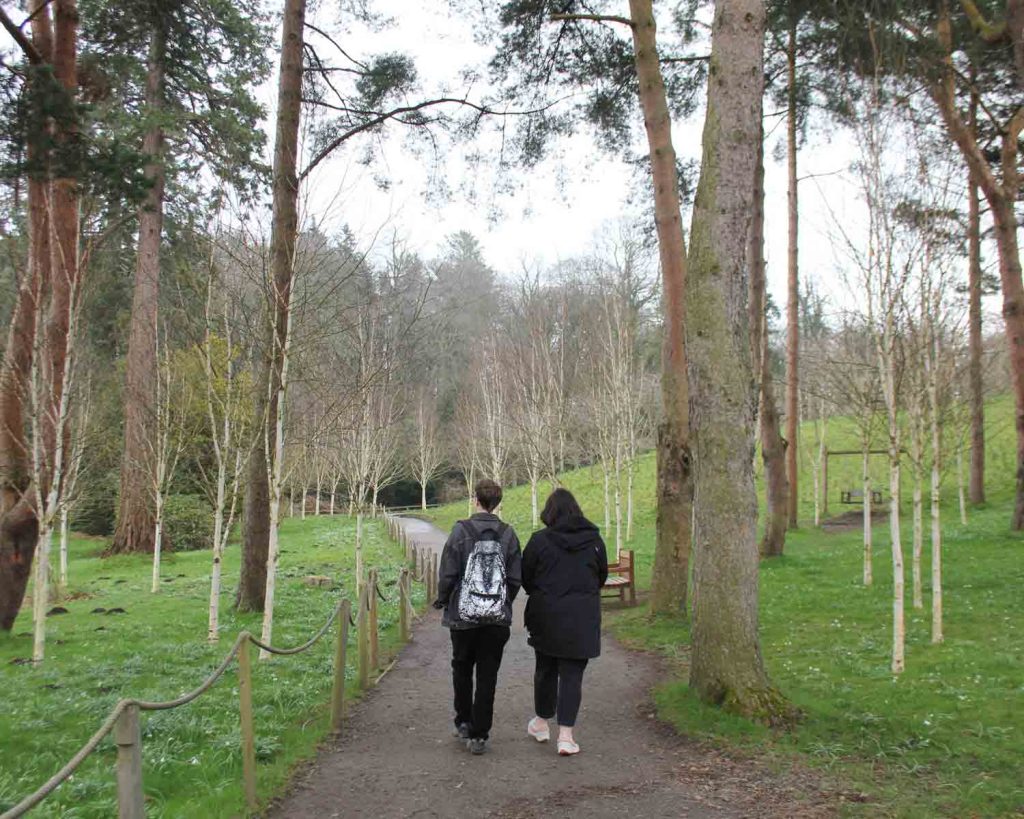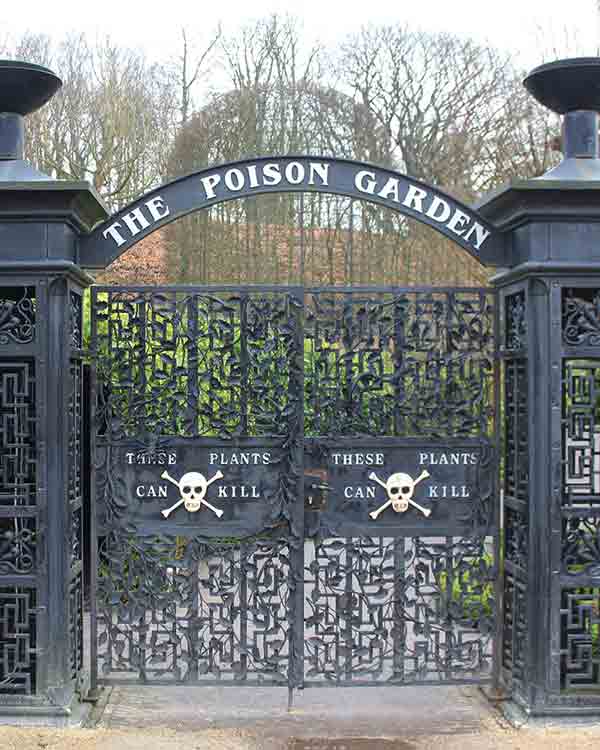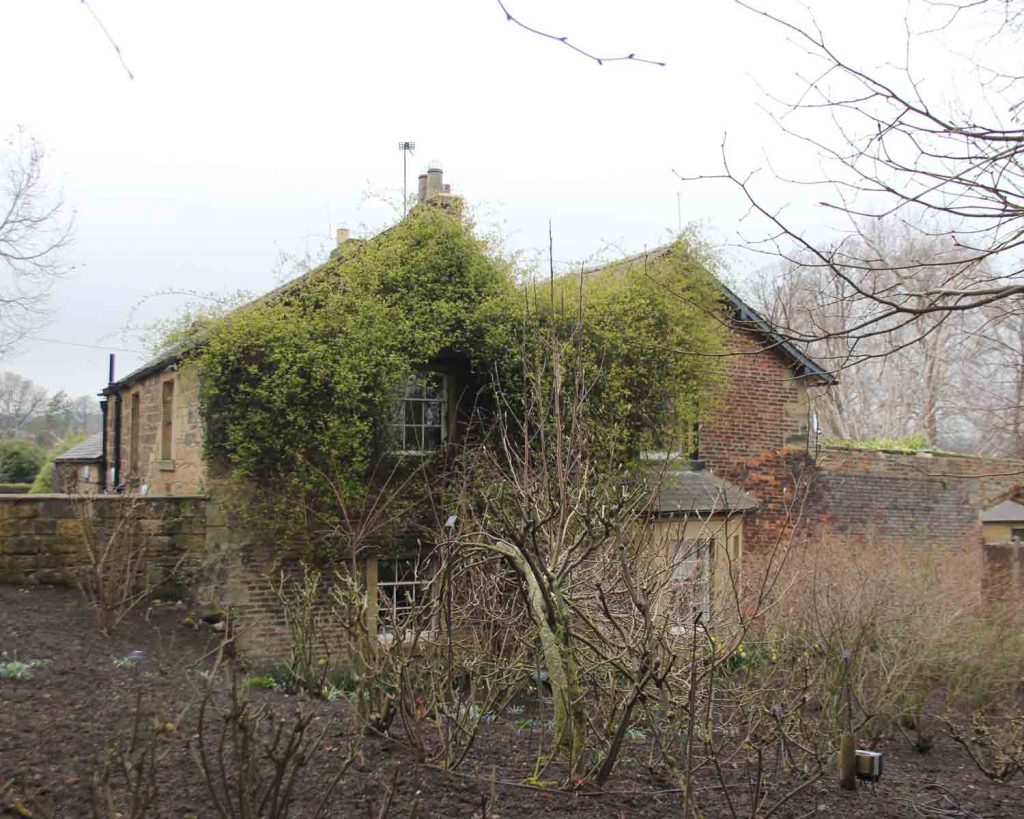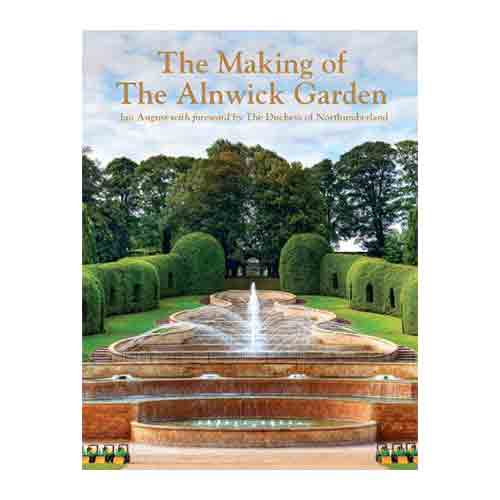Created by the Duchess of Northumberland, The Alnwick Garden is a delight; a modern garden combining sculpture, water features, and beautiful plants to create a wonderful family attraction. The Garden features a deadly poison garden, the largest collection of European plants in the UK and the largest Japanese Cherry Orchard in the World! As well as being horticultural innovators, the Alnwick Garden team are adopting new and inventive ways to shrink their carbon footprint and operate more sustainably. Below are just some of the highlights from our recent trip and a few ways that the Alnwick Garden team are being more environmentally-friendly and protecting biodiversity.


The Poison Garden
Beware the Poison Garden! Filled with around 100 toxic, intoxicating, and narcotic plants the poison garden can be accessed with prior booking only. We met at the ominous gates ready to be shown around. Visitors are strictly prohibited from smelling, touching, or tasting any plants, although some people still occasionally faint from inhaling toxic fumes while walking in the garden. Thankfully we did not faint! The tour was insightful and at times frightening with stories of poison, murder and even photos showing some of the reactions caused by the plants.
Behind every seed sown and flower blooming within The Alnwick Garden, exists a thriving eco-system that the garden team are striving to protect and preserve. The garden boasts a total of 67 acres of land that not only provides a spectacle of horticulture, but also a generative garden.


Avoiding water waste
Alnwick Garden boasts a variety of water features and installations made from natural materials. To ensure that water is not wasted, the team collect rain water via guttering around the polytunnels in a large water tank, the contents of which are used to water the tunnels. Water is also collected from The Pavilion roof to be used as grey water for the flushing of toilets on site. To reduce emissions and improve the water efficiency of the cascade and water features, the team used real-time data to track energy use, installed low emission bulbs and new efficient heating equipment.
Everything from the cultivation methods to the food served in the cafe and restaurant has been environmentally assessed to ensure that it has an eco-conscious approach.

Seaweed-based plant food
For ornamentals and crops the team use seaweed based plant food. As we visited in early spring we were lucky enough to see the beautiful Helleborus, most commonly known as hellebores in bloom. The gardeners at Alnwick Garden buy in a product called Strulch which is a mulch of mineralised straw. They mulch plants that are prone to slug damage with Strulch such as Hostas and Delphiniums which alleviates the need to put down slug pellets, meaning that their approach is even more environmentally-friendly and achieves a glorious display of flowers.


The Bamboo Labyrinth
The bamboo Labyrinth is a complex maze enclosed by Fargesia Rufa bamboo, the light shines in overhead but there is a real feeling of seclusion. The bamboo envelopes you as you pass through a serious of pathways, only to find yourself lost and utterly bamboozled (see what I did there?) As you meander around the garden you’ll be surprised at every turn with delights great and small. From the majestic cascade to the pretty Rose Garden. Alnwick Garden is a delight for the senses.

Encouraging wildlife and protecting biodiversity
The team at Alnwick Garden are dedicate to encouraging wildlife, dotted around you’ll spot nest boxes, insect hotels and habitat piles. With such a thriving eco system they do not have to spray for greenfly, blackfly and caterpillar, and tend not to use chemicals.

The Garden team use many traditional gardening methods that are more environmentally friendly than modern day materials and chemicals. Sustainable practices include composting all their vegetative waste to produce a rich compost within twelve weeks which is returned to the garden in the form of top dressings or mulches which prevent water loss and suppress weed growth. They also make leaf mould by stacking all the fallen leaves in the autumn and once rotted down we use this material as a top dressing around ericaceous plants such as azaleas and rhododendrons. To plan you trip, visit the Alnwick Garden website.

You might enjoy reading…
The Making of The Alnwick Garden describes the creation of this wonderful garden in the North-East, a place that can be enjoyed by anyone, breaking traditional design boundaries; a garden not for the faint hearted.




